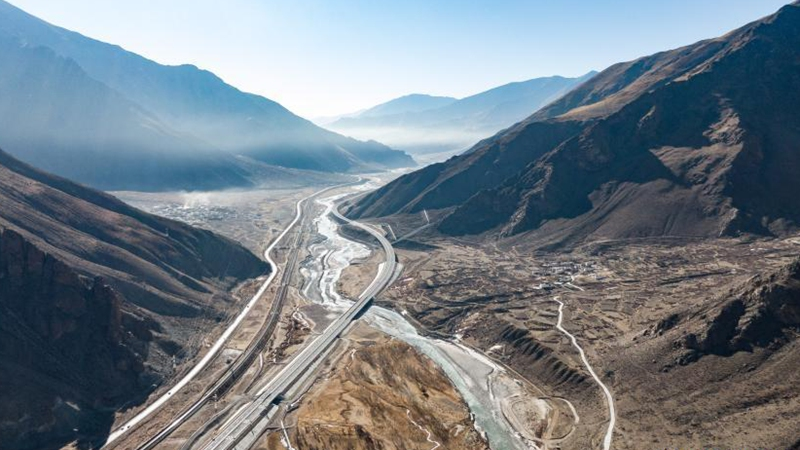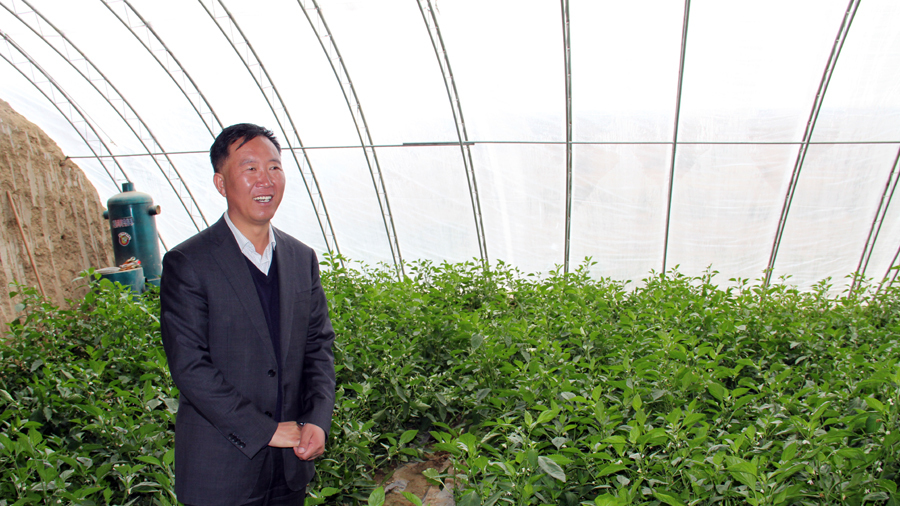
Seventy years might be a twinkling in the flows of time, but it has been a remarkable period of time for China's Tibet Autonomous Region. Within 70 years, the snow-covered plateau broke centuries-old theocracy rule and took a big stride from poverty to prosperity through democratic reforms.
All-round historical breakthroughs
Tibet has been a focus of the central government's agenda since the region realized peaceful liberation in 1951.
To support Tibet, the central government has introduced investment plans, various favorable policies covering tax and finance, infrastructure, industrial development, education, health, cultural preservation and environmental protection, together with a total of seven symposiums on Tibet work to realize comprehensive and steady progress in local economic and social development.
Thanks to the great efforts, the GDP of Tibet soared from 129 million yuan ($20 million) in 1951 to 190 billion yuan in 2020 with substantial economic growth and significant improvements to the economic structure.
By 2020, the central government, along with state-owned enterprises, had invested over 52.7 billion yuan through a total of 6,330 projects to support Tibet's infrastructure construction. Today, Tibet has successfully set up a comprehensive transport network composed of highways, railways, air routes and pipelines, a modern communications network consisting of optical cables and satellites, and a comprehensive energy network of hydro, solar, wind and geothermal power.
Breakthroughs have also been made in education, an area in which the region, starting from scratch, has built 3,195 schools of various types and levels with a net primary school enrollment rate of more than 99.9 percent.

L-R: The No. 109 national highway, the Qinghai-Tibet railway, a high-grade highway and a village-level road between Lhasa and Nagqu, Tibet Autonomous Region, January 28, 2021. /Xinhua
L-R: The No. 109 national highway, the Qinghai-Tibet railway, a high-grade highway and a village-level road between Lhasa and Nagqu, Tibet Autonomous Region, January 28, 2021. /Xinhua
Cracking the hardest nut
Among all the breakthroughs, achievements made in poverty alleviation are the most outstanding, and they wouldn't have been realized without the joint efforts of people from all ethnic groups.
Recognized as one of the "hardest nuts to crack" in the battle against poverty, Tibet, the once contiguous poor area with the highest incidence and most severe level of poverty, declared the eradication of absolute poverty in October 2020 after lifting 628,000 people out of poverty and removing 74 county-level areas from the poverty list.
To facilitate local development, the central government selected and dispatched 9,682 officials to assist the region.
Gao Baojun was one of them.
Arriving at Tibet's Purang County, Ngari Prefecture in 2013, Gao was appointed secretary of the CPC Purang County Committee. At that time, the poverty rate of the 10,000-person county was above 20 percent. And due to its high altitude of above 3,900 meters, the county couldn't even guarantee a daily supply of vegetables.
To help residents improve their life and get rid of poverty, Gao adjusted the county's single agricultural structure of planting highland barley and set up 33.3 hectares of greenhouses to plant vegetables.
Three years later, Purang grew its own vegetables. Moreover, by renting their land to farmers' cooperatives, residents can receive an extra income.
Gao encouraged residents to relocate from less hospitable areas to accommodation built by the county and realized connectivity by linking Purang to the national transportation and energy network. By 2016, residents' net income per capita had increased by 50 percent.
Thanks to Gao's dedication, Purang exited poverty in February 2019. When his term was over, Gao didn't choose to go back home but stay to contribute more to the local development.

Gao Baojun at a greenhouse, Purang County, Ngari Prefecture, Tibet Autonomous Region, August 20, 2015. /Xinhua
Gao Baojun at a greenhouse, Purang County, Ngari Prefecture, Tibet Autonomous Region, August 20, 2015. /Xinhua
Road to the future
Since China has completed the first centenary goal of building a moderately prosperous society in all respects and set off on the new journey of realizing common prosperity and the great rejuvenation of the Chinese nation, the central government is mapping out new policy directions aiming to build Tibet into a new modern socialist region featuring unity, prosperity and harmony.
On his latest visit to Tibet at the end of July, Chinese President Xi Jinping said he expected the region to develop an ecological civilization while achieving high-quality development that suits the local conditions through the joint efforts of people from all ethnic groups.
President Xi urged officials to consolidate achievements in poverty alleviation while ensuring a smooth transition into rural vitalization. According to the president, Tibet, in the new era, should speed up its reform and opening-up process and accelerate the construction of railways, highways and other major infrastructure.
He also called for the development of industries with local characteristics and a national base for clean energy.
Other official documents such as the 14th Five-Year Plan and the Long-Range Objectives Through the Year 2035 outline development plans for the region. It is believed that Tibet, with the support of the central government and the joint efforts of people of all ethnic groups, will find a path that suits its situation for common prosperity.

